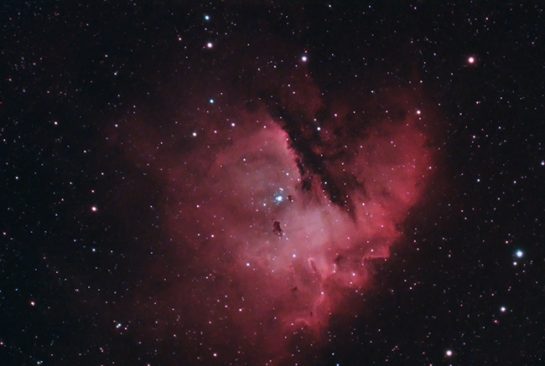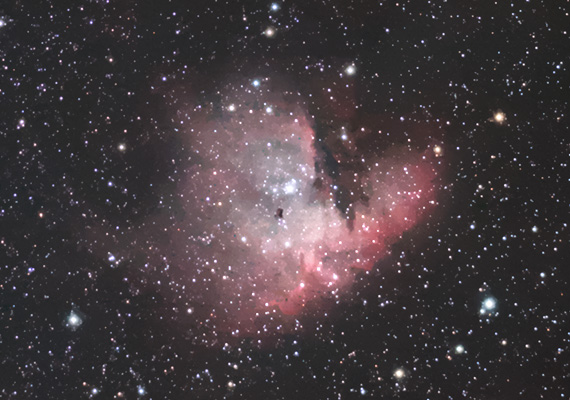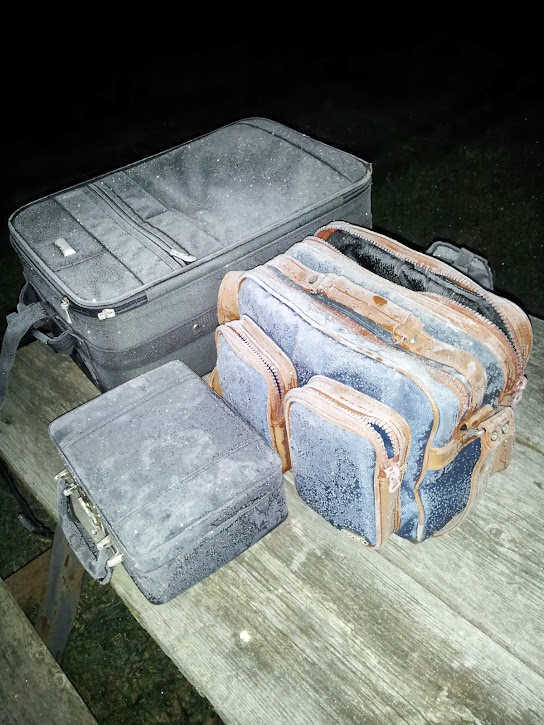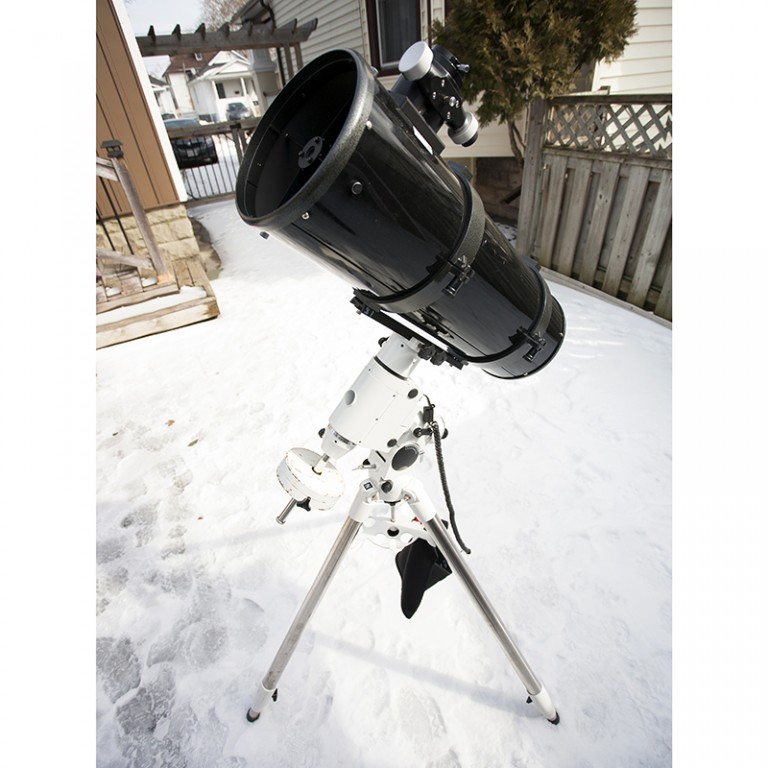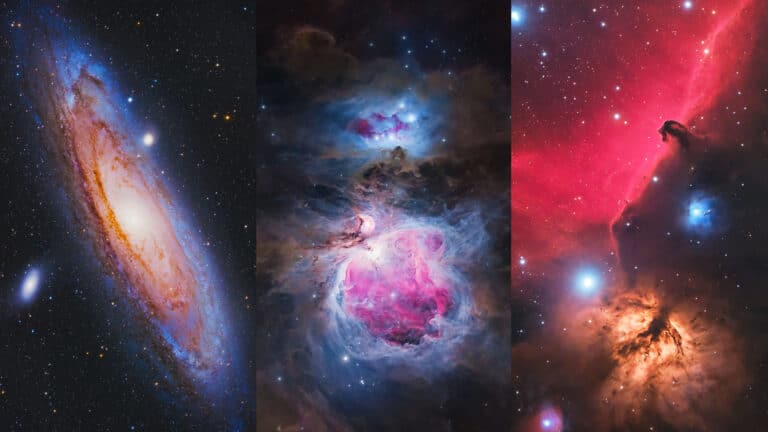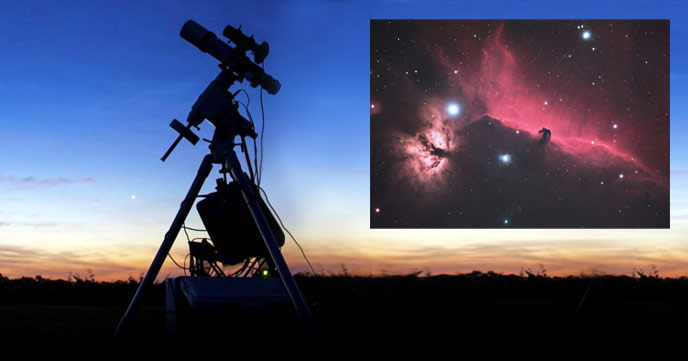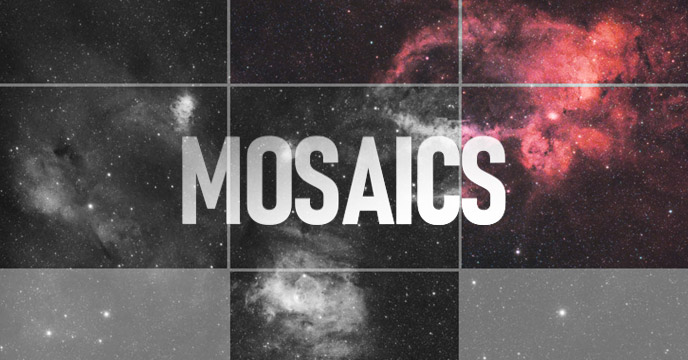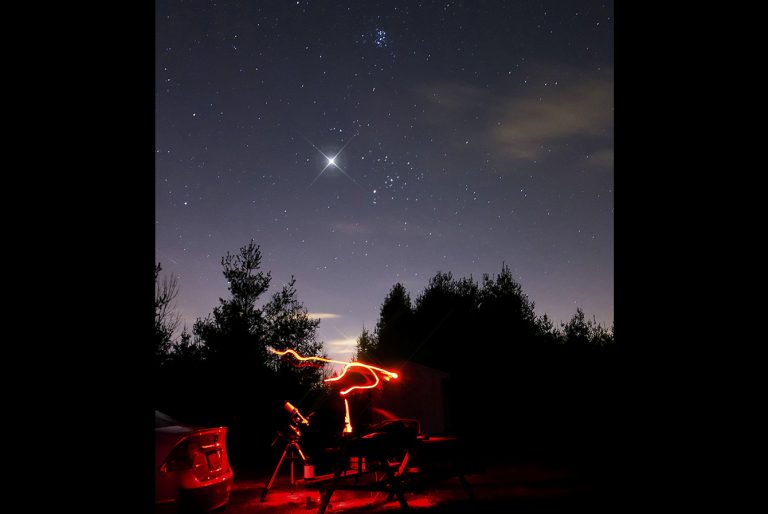Pacman Nebula – Stock Canon DSLR
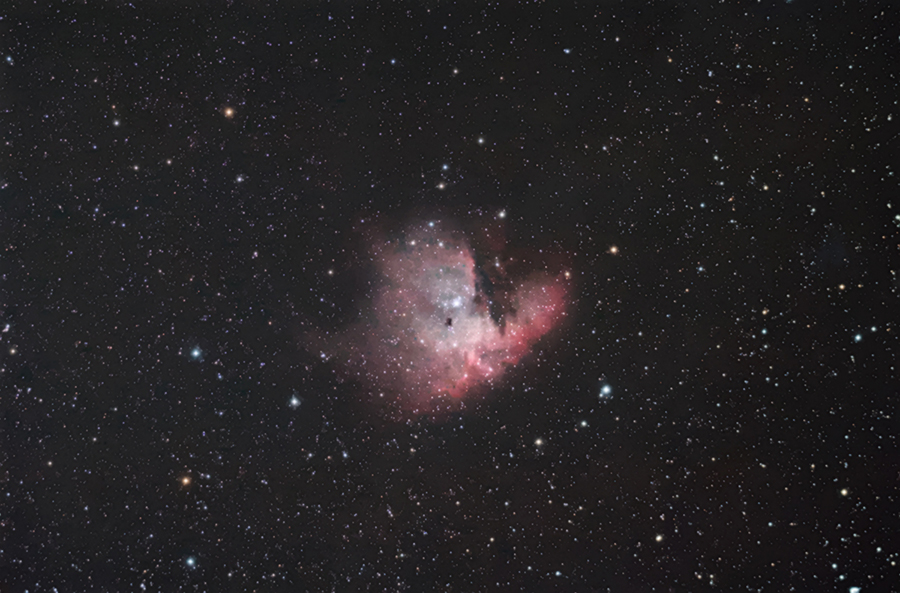
Below, you will see an image of the Pacman Nebula using a stock (non-modified) DSLR camera. A Canon EOS Rebel Xsi (450D) to be exact. I have often said that an entry-level DSLR camera is probably the best astrophotography camera to start out with.
DSLR cameras are affordable, versatile, and can be used for more than just astrophotography at night. They are also more user-friendly and don’t require additional software tools to use. The deep sky image below is an example of what you can expect to capture through a telescope without an astro-modification. Further down the page, I’ll show you what this nebula looks like using a dedicated astronomy camera and narrowband filters.
The Pacman Nebula using a stock DSLR
NGC 281, The Pacman Nebula – Imaged Monday., Nov 3, 2013
20 subs 5 Minutes Each totaling 1 Hour, 40 Minutes
PHOTO DETAILS
- Telescope: Explore Scientific ED80 with WO Flat III 0.8x FR/FF
- Mount: Skywatcher HEQ5 Pro Synscan
- Guiding: Meade DSI Pro II and PHD Guiding
- Guide Scope: Orion Mini 50mm
- Camera: Canon EOS 450D (Stock)
- ISO: 1600
- Exposure: 1 hours 40 minutes (20 x 300s)
- Processing Software: Calibration and Stacking in Deep Sky Stacker, Levels/Curves/Enhancements in Photoshop CC
- Support Files: 15 darks
This is a great time of year for astrophotography, with the nights beginning so early and lasting so long. The downside, of course, is the frigid temperatures. Luckily I have a reasonable winter setup for imaging that includes a small space heater and a lot of warm clothing. I am able to enter a small shed and hang out while my camera fires away. The temperature dropped to -3 on Sunday night, great for imaging.
I have never shot the Pacman Nebula before. To be honest, I had no idea a stock DLSR could pick up so much red in this object. Cassiopeia rises nice and high in the evening this time of year, so imaging NGC 281 is a popular target right now. I am very happy with the way this DSO has turned out so far, even with the limited time I have put on it. I was also surprised at its size, comparable to the Eagle Nebula in my 80mm scope.
My frozen Cases at my Dark Sky Site
The Pacman Nebula in Narrowband
My latest photograph of this nebula was taken using an Altair Hypercam 183C color CMOS camera. I captured broadband RGB light frames on this target using a 2″ Baader Moon and Skyglow (Neodymium) filter. To add a boost in signal, I also captured images with a 12nm Ha filter and combined the two using the HaRGB method.
